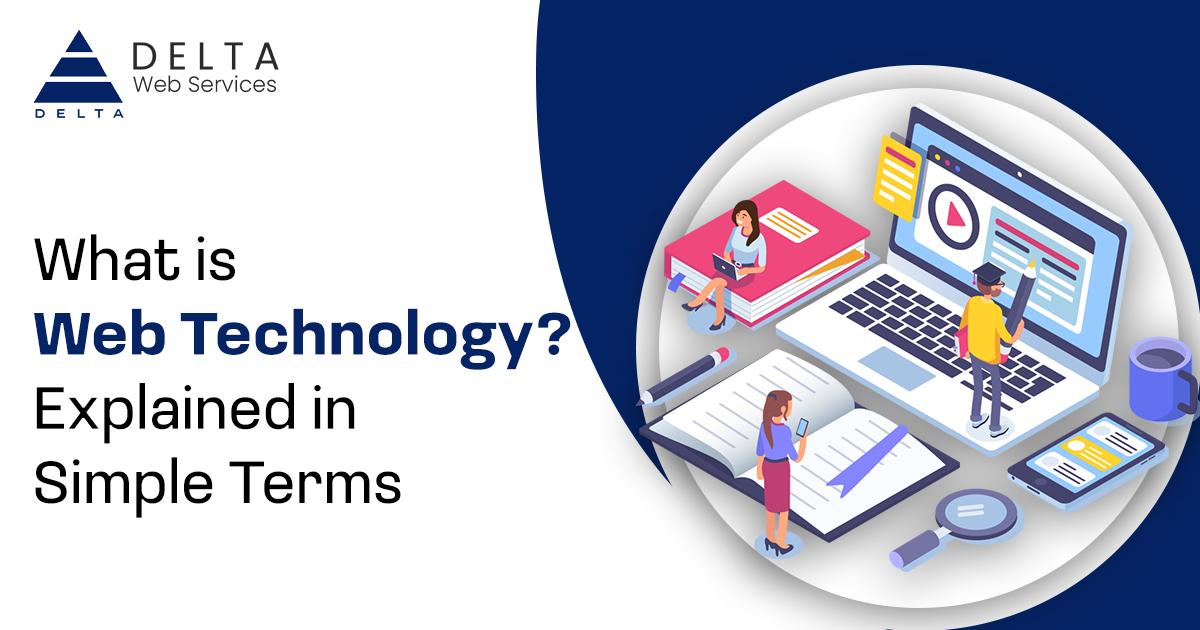Notifications

8 minutes, 33 seconds
-14 Views 0 Comments 0 Likes 0 Reviews

In today’s hyper-connected world, every click we make, every app we open, and every website we browse is powered by something called web technology. It’s a term that gets thrown around often, especially in tech and business circles, but what does it actually mean? Whether you're a student, a business owner, or just curious about how the internet works behind the scenes, understanding web technology is essential in the digital age.
Let’s break it down, explore its meaning, and see how it impacts our daily lives and industries around us.
At its core, web technology refers to the tools, languages, protocols, and systems used to build, manage, and interact with websites and web-based applications. It’s the entire ecosystem that makes the World Wide Web work.
These technologies include everything from the basic structure of websites (like HTML, CSS, and JavaScript) to complex programming environments (like PHP, Python, or Node.js) and database systems (like MySQL or MongoDB). It also encompasses protocols such as HTTP, HTTPS, and FTP which manage the exchange of data between web servers and clients (browsers).
In simpler terms, web technology is what developers use to design, develop, host, and deliver content or services online.
Let’s define web technology formally:
Web technology is the suite of technologies used to create, deploy, and operate applications and websites over the internet or intranet. It includes both client-side (frontend) and server-side (backend) programming, databases, communication protocols, and frameworks.
Some major components of web technology include:
Frontend Technologies:
These deal with the visual aspects of a website or app.
HTML (Hypertext Markup Language) – Structure of a webpage
CSS (Cascading Style Sheets) – Styling and layout
JavaScript – Interactivity and dynamic content
Backend Technologies:
These power the server, handle databases, and manage logic.
Programming languages like PHP, Python, Ruby, Java, Node.js
Databases like MySQL, PostgreSQL, MongoDB
Web Servers:
Platforms like Apache, Nginx, or Microsoft IIS that serve web content
Protocols:
Rules for communication like HTTP, HTTPS, TCP/IP
Web Frameworks:
Tools that simplify development, such as React, Angular, Django, Laravel
Together, these components enable us to build everything from simple blogs to complex web apps like e-commerce platforms, social networks, and cloud-based software tools.
Many people use the terms "internet" and "web" interchangeably—but they are not the same thing.
The internet is the global network of physical computers, servers, and devices connected to each other. It’s the infrastructure cables, satellites, routers, and data centers—that allows information to travel from one point to another.
The web is just one of the services that runs on the internet. It’s a collection of websites and web pages accessed using browsers like Chrome or Firefox, using web technologies such as HTML, CSS, and JavaScript.
So, web technology is the software layer that operates on top of the internet. It defines how information is presented and interacted with on the web.
Think of the internet as the roads and highways.
The web is the car you drive on them.
And web technology is how the car is built, its engine, design, and interface.
Web technology is not just a technical concept—it’s a powerful enabler for innovation, communication, and business transformation. Here are some major benefits:
Web technologies allow content to be accessible anywhere, anytime, from any device with an internet connection. Whether it's a website, a mobile app, or a cloud-based service, businesses can reach a global audience without physical boundaries.
Creating a website or web app is far more cost-effective than traditional software distribution or brick-and-mortar expansion. Open-source technologies and cloud services make it affordable for even small startups to launch and scale.
Technologies like WebSockets, AJAX, and APIs allow real-time data exchange, enabling services like live chats, instant messaging, real-time stock updates, and collaborative platforms like Google Docs.
Modern web applications are designed to work across multiple devices and operating systems from desktops to smartphones to tablets—ensuring a seamless experience for users regardless of the platform.
Web-based software can be updated in real time, without requiring users to manually install anything. This makes it easier to push bug fixes, new features, and security patches.
With advancements in frontend technologies, developers can build interactive, responsive, and engaging user interfaces. This directly impacts user retention and satisfaction.
Web technologies allow businesses to gather, store, and analyze user data effectively—helping them understand behaviors, preferences, and trends through tools like Google Analytics or custom dashboards.
Modern web technologies support secure protocols (like HTTPS), authentication, data encryption, and cloud-based scalable architecture, making them suitable for large-scale enterprise applications as well as individual portfolios.
You encounter web technology every day—even if you don’t realize it. Here are just a few common examples:
E-Commerce platforms like Amazon, Flipkart
Online Banking and payment gateways
Streaming Services like Netflix and YouTube
Learning Platforms like Coursera and Udemy
CRM/ERP Tools like Salesforce or Zoho
Social Media platforms like Facebook and LinkedIn
Behind each of these is a complex network of web technologies working together to deliver a smooth, secure, and scalable user experience.
Understanding what web technology is opens up a clearer picture of how the modern internet operates. From building simple static pages to developing full-scale cloud-based web applications, web technology is the foundation of the digital experience.
As businesses and individuals continue to embrace digital-first strategies, knowledge of web technologies becomes not just beneficial—but essential. Whether you’re launching a startup, planning a website, or entering a career in tech, learning about the tools that run the web will empower you to make smarter decisions in the digital space.
Read Also:

